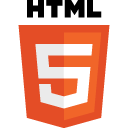

Evolution of the Web
Application Platform independent from Devices/OSs
Open Web Platform
HTML5 and its family specifications

(cited from the slides by dynamis from Mozilla Japan)
What is "HTML5"?
Version 5 of the HyperText Markup Language (HTML)
- Web pages consist of HTML (syntax) and CSS (style)
- International standard by W3C for all the (major) Web browsers
Examples of the HTML5 Features
- Video & Audio without plugins
- Canvas
- Web Storage
- Web Socket
- Web Workers
- Service Worker
→ Programming platform with strong extensibility using various APIs
→ Being applied to mobiles, Automotive and more (IoT)
→ Standardized by W3C
W3C's Web Standardization
Lead the Web to its full potential!
- Established by Tim Berners-Lee in 1994

- International consortium to develop Web standards for interoperability
- W3C Recommendations including

W3C Member Organizations
Global Members:
- 420 Member organizations as of June 8
- Web browsers, Web services, Home appliances, Telecommunications,Hardware/Software, etc.
Japanese Members:
- 39 Member organizations:
- Device: Canon, Fujitsu, Hitachi, Mitsubishi Electric, NEC, Panasonic, Sony, Toshiba
- Web Browser & Other Software: ACCESS, jig.jp, Alfasado, Antenna House, APTPOD, BPS, ECN, FTL, IQP, Lei Hau'oli, Lepidum, Mitsue-Links, Nwphoria, ORO, Recruit Technologies, UNI, Vivliostyle
- Web Service: Rakuten
- Telecommunicaition: KDDI, NTT, NTT Docomo, Softbank
- Broadcasting: NHK, JBA, Tomo-Digi
- Education: Internet Academy, Keio University
- Other organization: AMEI,DSC, Sabae City,JRS
Automotive and Web
Change of Automotive Ecosystem
- Software getting more and more important
- Huge cost for software development and management
- Expectation for "Open Innovation" including Web technology
Telematics & Connected Car getting more and more popular
- Toll collection system and more
- Security systems, e.g., eCall, SVT
- Evolution of connected cars and integration with mobile systems
Standardization by W3C
- Promoting usage of Web technology in cars
- Data property and APIs for HTML5-based IVI
- Integration of existing mechanisms:
- GENIVI
- Tizen IVI
- Webinos
- QNX
Web-based Connected Cars
Advanced navigation, probe, driving assistance, drive recorder, diagnosis, emergency detection, etc.
W3C Automotive Web Discussion
F2F Meetings so far
— BG
- 14-15 Nov. 2012: W3C Workshop in Rome, Italy
- 22 Apr. 2013: Barcelona, Spain
- 29 May 2013: Tokyo, Japan
- 17018 Mar. 2014: Santa Clara, US
- 22-23 May 2014: Gothenburg, Sweden
- 9-10 Oct. 2014: Ann Arbor, US
F2F Meetings so far
— BG+WG
- 23-24 Apr. 2015: Stuttgart, Germany
- 28-29 Jul. 2015: Seattle, US
- 26-27 Oct. 2015 Sapporo, Japan
- 28-29 Apr. 2016 Paris, France
Technical Issues
- Security & Privacy
- Service Interface
- Media Tuner
- Navigation (LBS)
- Vehicle Signal Specification (VSS)
- Software Updates Over the Air (SOTA)
- Others
- Bluetooth, Vehicle Environment, Driving Modes, Telephony, Device API, Application Lifecycle
Automotive and Web Platform Business Group
Basic discussion
- Since Feb. 2012
- 130+ partcipants; 60+ organizations
- Chairs: ETRI, Alibaba, OpenCar
- Collaboration with GENIVI (LBS, SOTA, Media tuner)
Draft spec in Dec. 2014
Automotive Working Group
Web standard generation
- Since Feb. 2015
- 40+ partcipants; 15+ organizations
- Chairs: JLR, Mitsubishi Electric, OpenCar
- Spec generation (Vehicle Information Access API; Vehicle Service Interface)
Working Drafts
Automotive WG Discussion
Task Forces
Upcoming Meetings
Vehicle Information Access API
Vehicle Information Access API Spec Draft
- Configuration:
- Seat and position: Zone
- Data obtaining callback: VehicleInterfaceCallback
- Availability check callback: AvailableCallback
- Error hangling: VehicleInterfaceError
- Data Handling:
- Data obtaining API: VehicleInterface
- Static parameter setting: VehicleConfigurationInterface
- Dynamic parameter get/set: VehicleSignalInterface
- Availability setting: Data Availability
- Logging: History (optional)
Vehicle Data
Vehicle Data Spec Draft
- Common data: Timestamp
- ID & Car features
- Running status
- Maintenance/Diagnosis
- User preference
- Safety
- Weather
- Camera/Parking/ADAS, etc.
Security and Privacy Task Force
Mission
- Provide envisioned incident studies
- Clarify requirements of web technologies based on the above studies
- Propose technical description to be added for Vehicle specs
- Vehicle Information Access API
- Vehicle Data
Web&Automotive Hackathon
Held on Jan. 30-31, 2016
- Developing Web applications for Web-based IVI using the Vehicle API
- Car speed, Acceleration, Brake, Engine speed, etc., provided by the Vehicle API emulation environment
- 11 Teams of 5-6 people
- Coold Web applications
- Confirmed the feasibility and efficiency of the W3CVechicle API
Vehicle API Emulation Environment
Collaboration with Related Groups withing W3C
- Geolocation
- Device and Sensors
- Web of Things (WoT)
- TV Control
- Multimodal Interaction (MMI)
- etc.
Web of Things
Web Technology to Interconnect Things
- Web-based abstraction layer to interconnect existing IoT platforms
- Liaisons with industry alliances and standards development organizations
- Semantic interoperability and end-to-end security
WoT Servient Architecture

(cited from the Web of Things Architecture document)
Servient Example
— Smart hub at home

(cited from the Web of Things Architecture document)
WoT Ecosystem
— WoT as the glue for IoT
Security Questions
— with the WoT context
Security, Privacy & Safety getting even more important
→ Questions from the W3C20 Asia panel session
- Q1: Concrete architecture for the expected WoT ecosystem?
- Viewpoint: Specific module/mechanism/principle like the immune system of human bodies?
- Q2: Possible risks for the ecosystem?
- Viewpoint: What would be the cost-efficient model for protecting safety, security and privacy?
- Q3: Expected resolutions and remaining issues?
- Viewpoint: What are the challenges from both technology side and non-technology side?
Thanks!
Space, Right Arrow or swipe left to move to next slide, click help below for more details














